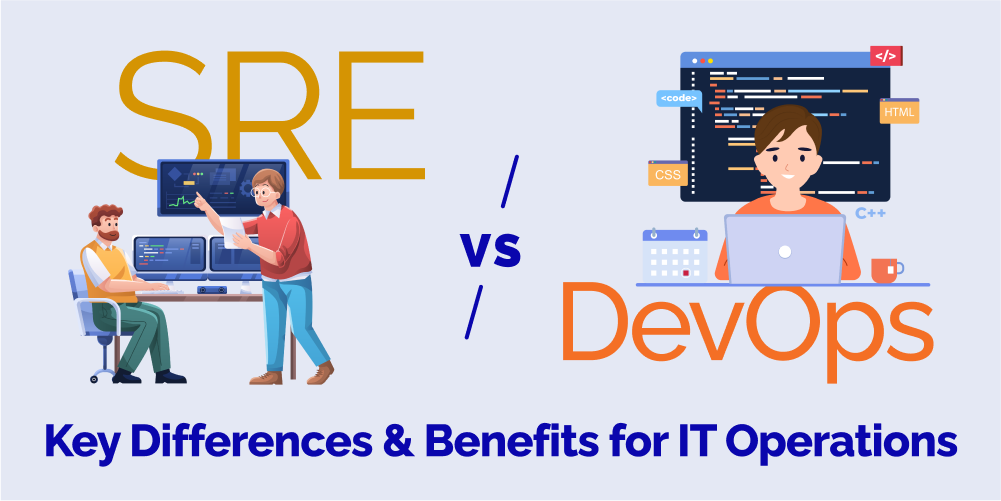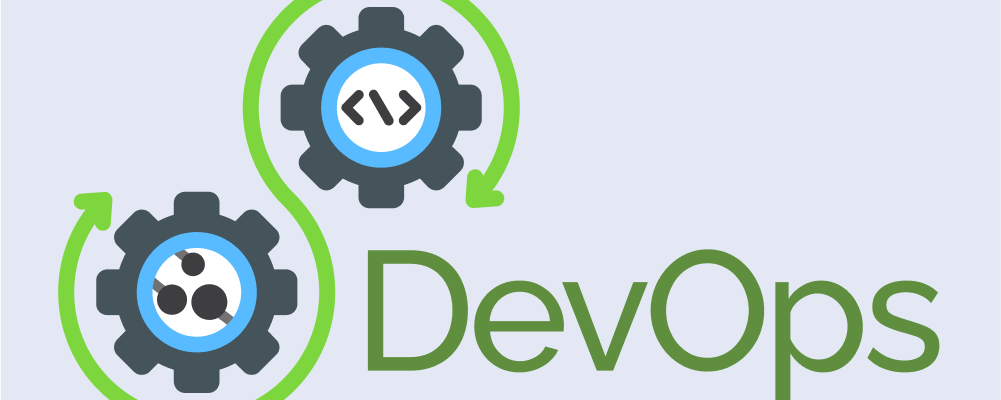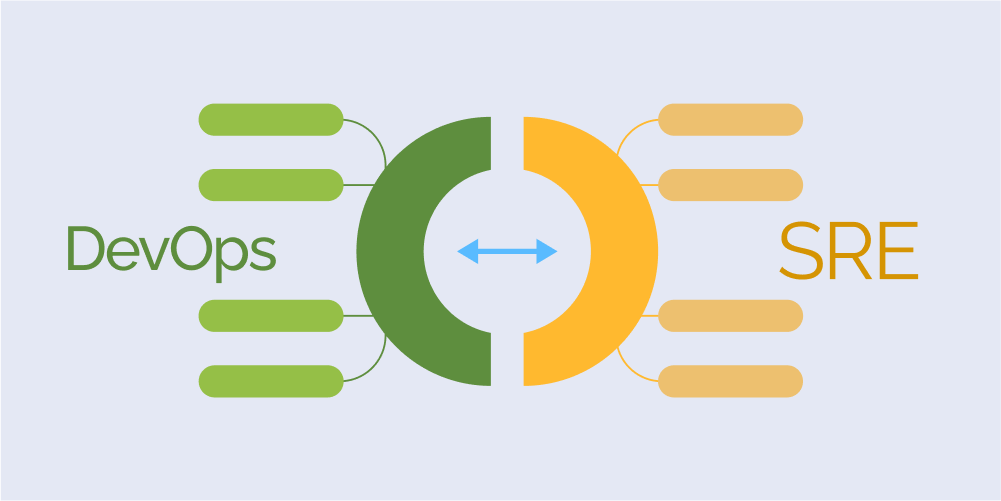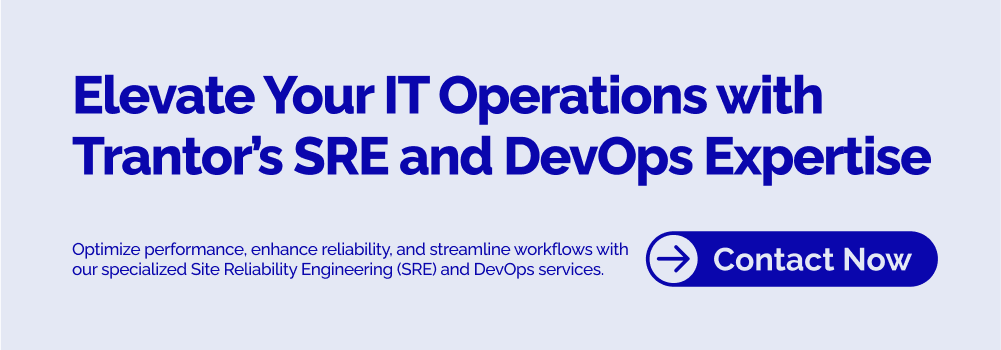Software Development, zBlog
SRE vs. DevOps: Understanding the Differences and Benefits for Modern IT Operations
atif | Updated: November 25, 2024

Introduction
In the modern IT landscape, maintaining high levels of performance, reliability, and efficiency is crucial. As organizations strive to deliver seamless digital experiences, two prominent methodologies have emerged to address these needs: Site Reliability Engineering (SRE) vs DevOps. While both approaches aim to enhance IT operations, they have distinct philosophies, practices, and benefits.
This blog will delve into the core differences between SRE vs DevOps, explore their respective benefits, and offer guidance on how organizations can leverage these methodologies to optimize their IT operations. We’ll also examine real-world examples of successful SRE vs DevOps implementations and discuss how to choose the right approach for your organization.
1. Understanding DevOps

DevOps is a cultural and technical movement that aims to bridge the gap between development and operations teams. It emphasizes collaboration, communication, and integration to streamline the software development lifecycle (SDLC) and deliver high-quality software rapidly and efficiently.
Key Principles of DevOps
- Collaboration: DevOps fosters collaboration between development and operations teams, breaking down traditional silos and encouraging joint efforts to achieve common goals.
- Automation: Automation is central to DevOps, encompassing continuous integration (CI), continuous delivery (CD), and infrastructure automation to accelerate software delivery and reduce manual effort.
- Monitoring and Feedback: DevOps emphasizes the importance of monitoring applications and gathering feedback to improve performance and address issues promptly.
Benefits of DevOps
- Faster Delivery: DevOps practices, such as CI/CD, enable faster and more frequent software releases, allowing organizations to respond quickly to market changes and customer needs.
- Improved Quality: Automation and continuous testing reduce the likelihood of defects and enhance software quality, resulting in more reliable and stable applications.
- Enhanced Collaboration: By promoting collaboration between development and operations teams, DevOps improves communication and fosters a culture of shared responsibility and accountability.
2. Understanding Site Reliability Engineering (SRE)

Site Reliability Engineering (SRE) is a discipline developed by Google that focuses on ensuring the reliability, availability, and performance of large-scale systems. SRE combines software engineering practices with operations expertise to manage and improve system reliability and scalability.
Key Principles of SRE
- Service Level Objectives (SLOs): SRE emphasizes defining and monitoring SLOs to ensure that services meet reliability and performance targets. SLOs help align operational efforts with business objectives and customer expectations.
- Error Budgets: SRE introduces the concept of error budgets, which represent the allowable level of service disruptions or errors. This approach helps balance the trade-off between releasing new features and maintaining system reliability.
- Incident Management: SRE focuses on efficient incident management, including detecting, responding to, and resolving incidents. Post-incident reviews and blameless postmortems are used to learn from incidents and improve system reliability.
Benefits of SRE
- Improved Reliability: By focusing on SLOs and error budgets, SRE ensures that systems remain reliable and available, even as new features and changes are introduced.
- Proactive Management: SRE emphasizes proactive monitoring and incident management, helping to identify and address potential issues before they impact users.
- Scalability: SRE practices are designed to handle the complexity and scale of large systems, making them well-suited for organizations with extensive and distributed infrastructures.
3. SRE vs DevOps: Comparison

While SRE vs DevOps share common goals of enhancing IT operations and improving software delivery, they differ in their approaches and methodologies:
a. Focus and Scope
- DevOps: Focuses on integrating development and operations to streamline the SDLC and improve overall software delivery. DevOps covers a broad range of practices, including automation, collaboration, and continuous delivery.
- SRE: Concentrates specifically on system reliability, availability, and performance. SRE uses software engineering principles to manage and improve large-scale systems and ensure they meet reliability targets.
b. Metrics and Goals
- DevOps: Emphasizes metrics related to software delivery, such as deployment frequency, lead time, and mean time to recovery (MTTR). The primary goal is to accelerate the release of high-quality software.
- SRE: Focuses on reliability metrics, such as SLOs, error rates, and uptime. The goal is to balance the trade-off between reliability and feature development while maintaining system performance.
c. Approach to Incidents
- DevOps: Incidents are typically managed by both development and operations teams, with a focus on quick resolution and continuous improvement.
- SRE: Incidents are managed with a structured approach, including root cause analysis, postmortems, and the use of error budgets to guide decision-making and improve reliability.
d. Automation and Tooling
- DevOps: Emphasizes automation across the entire SDLC, including CI/CD pipelines, infrastructure management, and configuration management.
- SRE: Uses automation primarily to enhance system reliability and performance, including automated monitoring, alerting, and incident response.
4. Benefits of Adopting SRE and DevOps

Organizations that adopt SRE and DevOps methodologies can achieve significant improvements in their IT operations:
a. Increased Efficiency
- DevOps: Accelerates software delivery through automation and streamlined processes, enabling faster releases and quicker responses to market demands.
- SRE: Enhances system reliability and performance, allowing organizations to manage complex systems more effectively and reduce downtime.
b. Enhanced Quality
- DevOps: Improves software quality through continuous testing and integration, resulting in fewer defects and more stable applications.
- SRE: Ensures high levels of system reliability and performance, reducing the likelihood of service disruptions and improving user satisfaction.
c. Better Collaboration
- DevOps: Fosters collaboration between development and operations teams, creating a culture of shared responsibility and accountability for software delivery and operations.
- SRE: Promotes collaboration between engineering and operations teams to address reliability issues and improve system performance.
5. Case Studies: Successful Implementation of SRE vs DevOps
Case Study 1: Netflix
Netflix has successfully implemented DevOps practices to achieve rapid software delivery and continuous innovation. By automating deployment processes and fostering a culture of collaboration, Netflix has maintained high levels of service availability and performance.
Case Study 2: Google
Google’s adoption of SRE has been instrumental in managing the reliability and performance of its large-scale systems. By defining SLOs, using error budgets, and focusing on proactive incident management, Google has ensured the reliability of its services while supporting rapid development.
Case Study 3: Amazon
Amazon has integrated both DevOps and SRE practices to optimize its IT operations. By combining DevOps principles with SRE’s focus on reliability, Amazon has achieved a balance between fast software delivery and maintaining high service availability.
6. Choosing the Right Approach for Your Organization

Organizations must consider their specific needs and goals when choosing between SRE vs DevOps or integrating both approaches:
a. Assessing Your Needs
- DevOps: Ideal for organizations looking to improve software delivery speed, enhance collaboration between development and operations teams, and implement automation across the SDLC.
- SRE: Suitable for organizations that require a strong focus on system reliability, performance, and managing large-scale infrastructure with defined reliability targets.
b. Integration of SRE and DevOps
Many organizations find value in integrating SRE and DevOps practices to leverage the strengths of both methodologies. By combining the focus on reliable operations from SRE with the automation and collaboration principles of DevOps, organizations can achieve optimal results in their IT operations.
Conclusion
Site Reliability Engineering (SRE) and DevOps are both essential methodologies for enhancing IT operations, but they offer different approaches and benefits. DevOps focuses on integrating development and operations to streamline software delivery, while SRE emphasizes system reliability and performance through engineering practices.
Understanding the differences between SRE vs DevOps and evaluating your organization’s specific needs will help you choose the right approach or combination of approaches to optimize your IT operations. By leveraging these methodologies effectively, organizations can achieve greater efficiency, quality, and reliability in their software and infrastructure.
For Trantor, the adoption of SRE and DevOps represents a strategic move toward improving IT operations and delivering high-quality services. As we continue to explore the possibilities of digital transformation, our expertise in SRE and DevOps will play a crucial role in shaping the future of IT operations.




